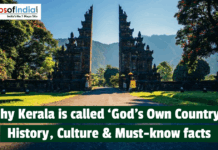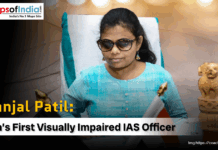The true face of the ‘Hindu majority community’:
It is a common belief that, India is essentially a Hindu nation, with the ‘majority community’ being the followers of Hinduism. Consequently, the minority comprises of the ‘non – Hindus’ and the religion adopted by the minorities are usually described as ‘minority religions’. This happens to be the common conjecture that is frequently highlighted in the essays about India, the political perspectives as well as the views of the States. However, the fact that Hinduism is the major religion of India happens to be a logically unsound argument as pointed out by many social activists and scholars. But the stated fact remains unacknowledged by and large.
If we take a close look at the Hinduism that prevails in our country, there are no common convictions, doctrines or habitual and customary performances that can be collectively bunched under the banner of Hinduism. It does not really matter which God an individual worships, whether he is respectable to the Bramhins and sarcastic of the Dalits, or whether he is in favor of ingesting beef (which incidentally is strictly ostracized by the traditional religious texts of Hinduism), the simple fact that he is born to Hindu parents and a citizen of India, automatically designates his religion as Hinduism. In fact, as per the definitions of the Hindu religious texts, a considerable amount of the Hindus, as declared by the census will hardly check out as authentic Hindus.
In simple terms, Hinduism in India has boiled down to an assortment of cultures, religious beliefs and customs that a true Hindu might find to be odious, agnostic and highly disagreeable. Therefore, the fact that Hinduism is the predominant religion of India is open to several interpretations as there is no explicit definition or majorly acknowledged common denominator that clearly demarcates the Hindus following which we can draw the conclusion that, the Hinduism of today’s India is largely an ‘imagined religion’. Even if we consider the parochial aspect, the Hindu community in general is largely segregated into different factions, stemming from the various ethnic traits and the caste systems that still prevail in our country. Owing to the lack of unity such factions can be described as divided among and against each other, which consistently denies the Hindu societal fabric. Being a Hindu in India essentially implies that, the said individual is not a Parsi, Muslim, Christian or a Jew.
Historical records consistently depict the efforts of the aristocratic Hindus, to propagate Hinduvta in a negative way, by fuelling non – Hindu feelings, thereby trying to consolidate Hinduism as a strong communal lobby based on a totally antagonistic concept, which has no connection whatsoever to the actual religion itself. Such non – Hindu feelings are especially directed at the Muslims and the Hinduism in India today can be described as a negative unification of persecutors of non – Hindu feelings which translates into Hinduism as the religion of the majority of the country’s population and the Hindus being the major community of India.
On the other hand, the Quran and the Prophetic traditions, though distorted in many ways, in the both social and religious perspectives, impose a great emphasis on the unity of the followers, i.e. religion is the common denominator for unity. However, fact remains that the term ‘Indian Muslim Minority Community’ happens to be fallacious as there are many factions of Muslims (firqas), and every such faction claims that they are the true upholders of the ideologies of Quran, while often condemning the other factions as ‘un Islamic’ or ‘anti – Islamic’. Hence, the theocratic categorization of the Muslims as religious minority is not an absolute fact. Besides, a caste system like the Hindus also exists amongst the Muslims which at the social level cause segregation of the Muslims into various factions.
Demand of the ‘Indian Muslim minority community’ to be special minorities in India:
There are five officially acknowledged minorities in India, namely Sikhs, Buddhists, Parsis, Christians and the Muslims, with the population of the Muslims being the largest. While the Government estimate of the Muslim population stands at 13 – 14%, the Muslims are of the opinion that they form 20% of the country’s population. Minority Affairs Minister K Rehman Khan had brushed off the issue of religion dictated reservations as evident from his statement, “The Constitution does not allow giving reservation on the basis of religion. The government, however, is committed to giving a 4.5% reservation to the minorities”. The Congress led Andhra Pradesh Government had allotted a 4.5% central sub – quota for the minorities under the OBC quota. The Andhra Pradesh High Court had denounced such allotments on the ground that reservations cannot be granted based on religion. The government had appealed against the ruling of the High Court in the Supreme Court.
Meanwhile, hundreds of Muslims activists of the Muslim Reservation Foundation (MRF) had started the 300 kilometers foot march to Mumbai, commencing from Malegaon, propagating the issue of a 20% reservation for the largest minority community of India. Asif Shaikh Rasheed, the founder member of the nine month old MRF had traversed the entire state to gather and mobilize the support of the Muslims in securing the demanded reservation, who, according to his opinion happen to be the most marginalized and underprivileged minority of our country. As announced by Rasheed on the eve of the foot – march, “The only way to empower Muslims in the country is reservation in government jobs and other public sector units. We want the government to give 20% reservation to the Muslims before the year 2014. No more promises, we want it now”. He had added that the statistics reveal a further deterioration of the Muslim community after the Sachar Committee Report which, according to Rasheed, had proposed specific reservations for the Muslims and not for other minorities as evident from his statement, “The Sacahar Committee Report had recommended reservation as one of the remedies for the backwardness of the alienated community. However, five years after the report, situation at the ground level had become worse”.
Comments of the eminent Muslim leaders of India supporting special reservations for the minority Muslims:
Hafiz Nadeem Siddiqui, President, Jamiatul Ulema, Maharashtra, who was also present at the commencement of the foot march to encourage the MRF activists and to express his active cooperation, openly threatened the Congress – led Government with severe political repercussions, if the Government did not initiate policies for the special reservations as demanded by the Muslims. He added that, “If reservation can be given to the Muslims in Andhra Pradesh, why not in Maharashtra? Is it ruled by the RSS?” Promising intensification of the protests, Siddique further added, “This is just a beginning. If the Government doesn’t accept our demands even now, a jail bharo andolan will be started across the state”. Underlining the fact that, the development of the country is largely associated with the development of the Muslims and other backward classes, Abdul Hameed Azhari, Kul Jaamati Tanzeem leader commented, “Maharashtra has more than 10% Muslims. But there is not a single Muslim Parliamentarian from the State. On this basis can we call the parliament a representative one? The country cannot flourish till appropriate share is given to Muslims and other downtrodden”. Hafiz Umrain, Member, All India Muslim Personal Law Board, commented, “Muslims have realized their vote – power. No party can to power without our support. Accept our demands if you want our support in the coming elections”.
Conclusion:
One can take an educated guess of how much the votes of the nearly 180 million Muslims of India will affect the polls in the 218 Lok Sabha constituencies across the country in the upcoming elections of 2014. The Muslims have resorted to a policy of ‘tactical voting’ where they cast their ballots in favor of the most legible candidate who can defeat the BJP. With the Muslims comprising of 10% of the voting population, Narendra Modi – led BJP will have a tough time in balancing the vote bank equations because the Muslims will evidently polarize in strong anti – BJP factions. Hopefully, the Hinduvta votes will be able to counter the lost Muslim vote bank. As for the Muslims their drift is clear. They will vote for anybody excepting BJP, who in the general Muslim opinion is an anti – Muslim party. So the 2014 elections will, undoubtedly, prove to be one that is strongly divided along the communal lines!




